According to the latest statistics, 15% of the population of the UK has used cannabis in their lifetime.
In the UK, cannabis is most used by people aged between 18 to 24, with 30% of this age group admitting to having used cannabis.
Cannabis is the most used recreational drug in the UK. (1)
For more information about cannabis statistics in the UK, please see more here.
Like most substances, prolonged use can lead to addiction, and, like most substances, overcoming this addiction can be difficult.
When attempting to stop using cannabis, people might experience a wide range of withdrawal symptoms.
If you, or someone you know, suffers from cannabis addiction, this article will be of use.
It will answer common questions surrounding cannabis addiction and withdrawal, such as: what is cannabis withdrawal? How long does withdrawal last? How do I get help for cannabis withdrawal?
What Causes Cannabis Withdrawal?

Withdrawal correlates directly with addiction. Addiction, in simple terms, is when a person’s brain and body become dependent upon a substance to function properly.
For example, when a person uses cannabis for a prolonged period, the chemicals in cannabis will begin to alter the brain’s ability to produce chemicals.
An example of this might be dopamine – the chemical responsible for feelings of happiness. Cannabis might produce this chemical in a person’s brain.
Over time, if the person uses cannabis regularly, the brain will stop producing dopamine on its own.
Therefore, when a person stops using cannabis, they might begin to feel depressed or anxious.
Withdrawal will begin to emerge because the brain and body need it to function normally.
Without the substance, people will begin to experience intense cravings and will begin to detox.
Detoxing is the process of the brain and body expelling the substance.
As the brain and body begin to attempt to achieve equilibrium, people will begin to experience withdrawal symptoms. (2)
What Are the Symptoms of Cannabis Withdrawal?
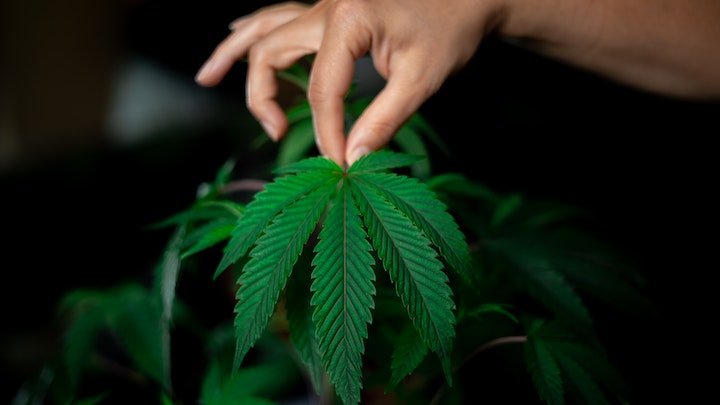
Symptoms of cannabis withdrawal will vary from person to person.
Several factors that contribute to this include how long the person has been using, how often they use, and how much they use.
A person that uses it regularly and in large quantities will likely experience more severe withdrawal symptoms than someone that is an infrequent user.
Cannabis withdrawal can lead to both psychological and physical symptoms. (3)
Symptoms of withdrawal include:
- Cannabis cravings
- Decreased appetite
- Erratic mood changes
- Becoming more irritable
- Restlessness
- Sleep disturbance
- Difficulty focusing
- Headaches
- Anxiety
- Depression
- Sweats
- Paranoia
- Stomach problems, such as stomach pains, abdominal pains, bloating or diarrhoea
- Flu-like symptoms
How Long Do Cannabis Withdrawal Symptoms Last?
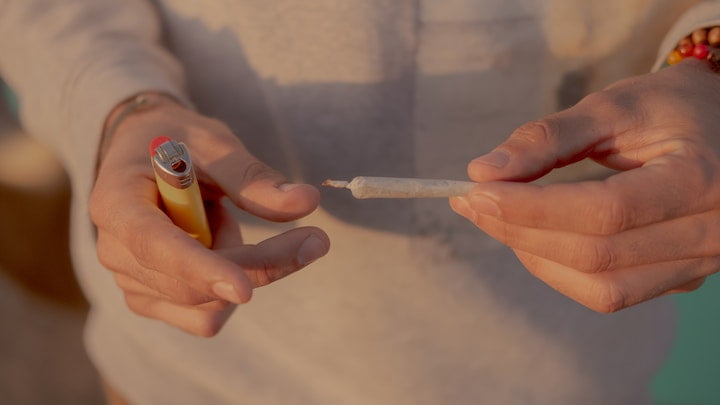
Like withdrawal symptoms, the duration of withdrawal will also vary from person to person.
However, studies suggest that cannabis withdrawal lasts between 7 to 10 days.
During these days the brain and body will go through a detoxification process.
During the first three days, withdrawal symptoms will begin to emerge.
Studies show that symptoms are often at their worst around the 3-day mark, with people experiencing intense cravings, sweats, and mood swings.
Commonly, this period of withdrawal is mostly physiological. By day 4, people will begin to have more psychological symptoms, such as anxiety and depression.
This is also the time that most people will relapse and begin using cannabis again.
Between 7 to 10 days cannabis withdrawal symptoms will usually peak and start to subside.
By day 30, the body will have expelled the substance completely. However, it should be noted that cannabis can stay in a person’s system a lot longer – sometimes up to several months.
This does not mean that people will experience withdrawal for a longer period, though. (4)
Reducing Cannabis Withdrawal Symptoms
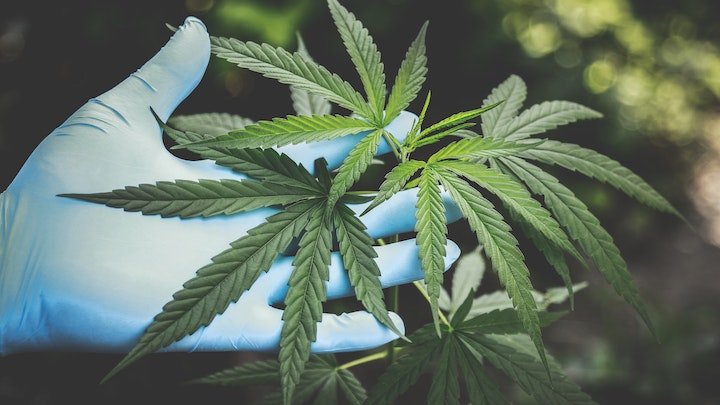
Although cannabis withdrawal symptoms might seem daunting, there are practical things that can be done to help reduce withdrawal.
The first is to not quit outright; that is, to slowly reduce consumption over a period.
This will allow the brain and body to adjust at a more reasonable rate.
During the withdrawal period, keeping the mind and body healthy is important.
The best way to do this is to drink plenty of water, eat healthy foods, and exercise.
Studies suggest that people should drink, on average, between 11 to 15 cups of water per day.
Eating the right things will also help. Doctors recommend that when withdrawing from cannabis people increase their fruit, vegetable, and protein intake.
Finally, exercising for 30 minutes per day will help reduce many cannabis withdrawal symptoms.
Getting Help for Cannabis Addiction
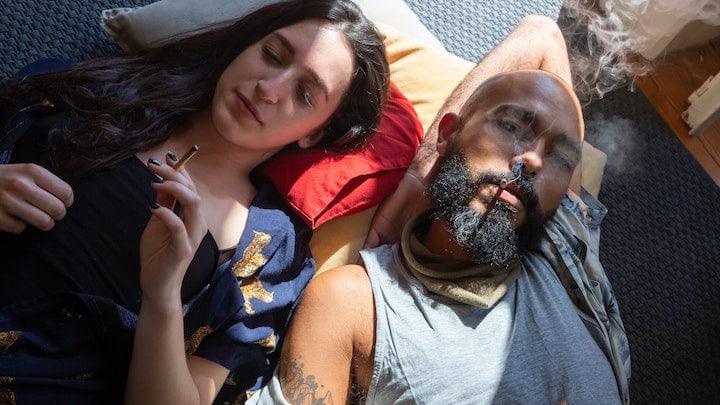
Because the withdrawal process can be arduous, it is recommended that people seek professional help, such as from a GP or other medical professional.
They will be able to put you on the right track and provide you with various treatment options.
Most locations in the UK have great, free drug and alcohol services.
These services often provide treatment, detox support, and therapy.
For more information regarding local, UK-based drug and alcohol services, please click here.
Inpatient Versus Outpatient Treatment for Cannabis Addiction
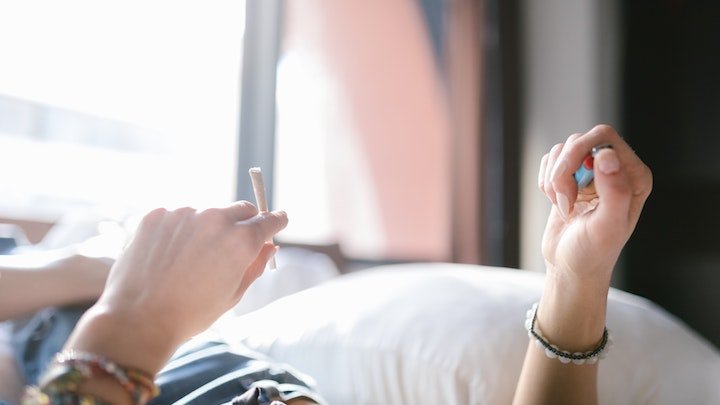
For those that do not want to detox and withdraw cannabis on their own, and would like professional help, there are two main options: inpatient and outpatient treatment.
Both are similar in that they offer a 4-stage process: detox and withdrawal, therapy, relapse prevention, and aftercare.
The main difference between the two is that inpatient addiction treatment is residential and requires people to stay at a facility for the duration of their treatment and outpatient does not.
Instead, during outpatient treatment, people attend weekly appointments (on average, 12 to 14 hours per week) at a doctor’s surgery, local clinic, or local drug and alcohol service.
As previously mentioned, detox is the process of expelling a substance from the body and brain.
During both inpatient and outpatient treatment, people will receive medical and emotional support. However, those that are in inpatient treatment will benefit from 24/7 medical assistance.
Both inpatient and outpatient treatment will offer a range of therapy and counselling, such as Cognitive Behavioural Therapy and Group Therapy. These are covered in more detail below.
People will also be provided with relapse prevention and aftercare. Both are aimed at helping people maintain sobriety.
This might involve creating a relapse prevention plan, regular check-ins, and continued therapy.
Both inpatient and outpatient treatment have several pros and cons.
The main benefits of inpatient treatment are on-hand medical supervision and its intensity.
Inpatient treatment tends to be shorter than outpatient treatment – on average 28 to 90 days for inpatient and 6 months to a year for outpatient.
However, inpatient treatment can be expensive. In the UK, the average residential program costs between £300 to £500 per day.
Although many private rehab facilities offer outpatient programs, outpatient treatment can often be accessed for free through a local service or GP.
In addition, outpatient treatment can be fitted around a person’s other engagements, such as work or childcare.
The main downside of outpatient treatment is that it does not remove people from their usual environments, meaning that they might be surrounded by temptations. (5)
Therapy for Cannabis Addiction

There is a wide range of therapies that both help people cope with cannabis withdrawal and overcome their addiction.
Some popular and tried and tested therapies for cannabis addiction include:
- 1-to-1 Therapy
- Cognitive Behavioural Therapy (CBT)
- Group Therapy
Of these, 1-to-1 therapy is probably the most common. Here, people will be expected to talk about what led to their using cannabis.
For example, people might be asked to talk about their family history, childhood experiences, relationships, or past trauma.
The main goal of 1-to-1 therapy is to uncover the root cause of the addiction. Talking about experiences and past issues helps shed light upon the nature of the addiction.
CBT is also popular for dealing with cannabis addiction. CBT looks at the relationship between thoughts and behaviours; that is, how certain thoughts (usually negative) lead to certain behaviours, such as using cannabis.
The goal of CBT is two-fold: to shed light upon what thoughts lead to using a substance and to help the patient learn to cognitively reappraise – to change negative thoughts into positive ones.
Both things should lead to positive behaviour changes.
Finally, group therapy has been proven to have a high success rate in helping people achieve and maintain sobriety.
As the name suggests, group therapy involves people meeting with peers – people that are going through similar experiences – and discussing their struggles and experiences.
Group therapy is particularly useful for helping alleviate feelings of isolation related to addiction and providing people with a sense of accountability. (6)
References
(2) Hall, Wayne. “What has research over the past two decades revealed about the adverse health effects of recreational cannabis use?.” Addiction 110, no. 1 (2015): 19-35.
(3) Budney, Alan J., and John R. Hughes. “The cannabis withdrawal syndrome.” Current opinion in Psychiatry 19, no. 3 (2006): 233-238.
(4) Allsop, David J., Melissa M. Norberg, Jan Copeland, Shanlin Fu, and Alan J. Budney. “The Cannabis Withdrawal Scale development: patterns and predictors of cannabis withdrawal and distress.” Drug and alcohol dependence 119, no. 1-2 (2011): 123-129.
(5) Ghosh, Abhishek, Nidhi Sharma, Dalton Noble, Subodh Bn, Debasish Basu, S. K. Mattoo, and R. R. Pillai. “Predictors of Inpatient Care in a 10-Year Retrospective Cohort Registered in an Outpatient Substance Use Disorder Treatment Program.” International Journal of Mental Health and Addiction (2021): 1-12.
(6) Lo Coco, Gianluca, Francesco Melchiori, Veronica Oieni, Maria Rita Infurna, Bernhard Strauss, Dominique Schwartze, Jenny Rosendahl, and Salvatore Gullo. “Group treatment for substance use disorder in adults: a systematic review and meta-analysis of randomized controlled trials.” Journal of Substance Abuse Treatment 99, no. February (2019): 104-116.





